

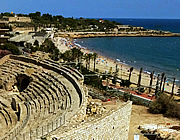
The Tarragona region has much to offer from extensive Roman remains, lovely historic towns like Montblanc, wonderful carved Royal Tombs at Poblet and a Knights Templar castle - and we had, as ever in Spain, great food everywhere.
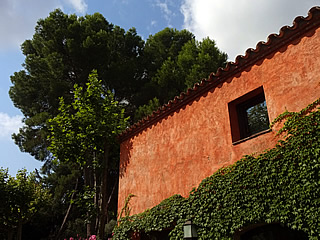
Mas La Boella is a lovely small hotel set in its own extensive estate of olive groves. It has only thirteen beautiful rooms in a country house dating back to the twelfth century, beautifully restored and set in tranquil gardens.
Our room was certainly luxuriously decorated with a balcony overlooking gardens and the edge of the pool area.
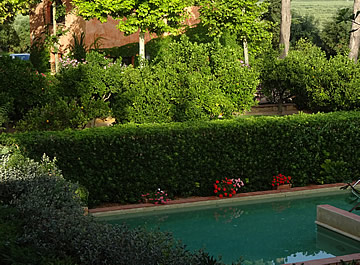
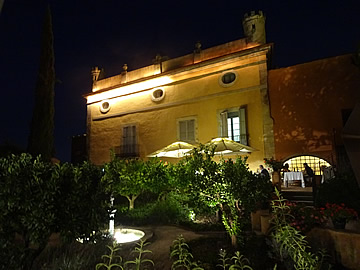
It was incredibly hot while we were there and we spent the first afternoon swimming and reading in the shade. It was lovely to swim in the pool after a hard day's sightseeing too!
One morning we had a tour of the olive production with the sommelier. He was very good, explaining everything from the three types of olives used - two Spanish and one Greek - through the whole production process, stripping out leaves etc. centrifuging, filtering, to make their extra virgin olive oil. We finished with a very instructive tasting of three separate olive oils - most surprising was the distinctive spiciness in the throat!
We had some excellent meals at La Boella - lunches of turbot, jamon iberico and the lovely local specialty toasted tomato bread, dinners of excellent chilled spicy prawn soup, lamb, suckling pig, accompanied by some really good wines - enjoyed in particular the Priorat recommended by the waiter.
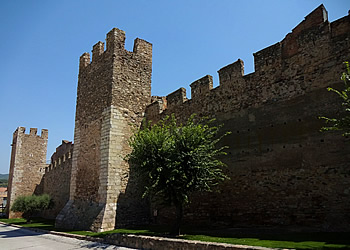
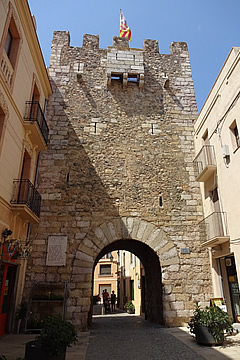
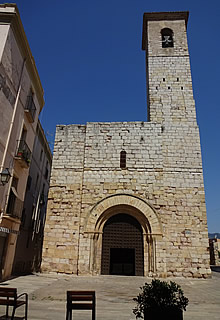
An easy drive to this lovely walled town north of Tarragona. Its a really nice place, few tourists, lots of locals, plenty to see and very good food.
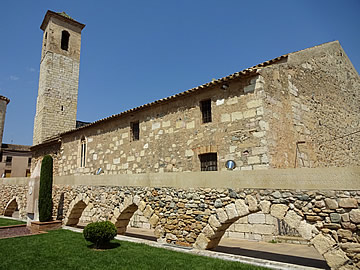
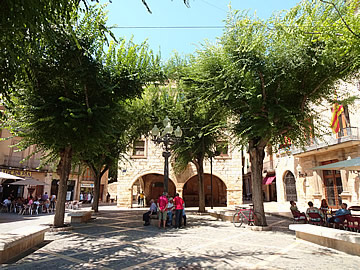
We made our way to the centre of the old town and had a beer in the small sunlit Placa Major, ringed with cafes and old buildings - the kind of place you could spend half a day just watching life go on.
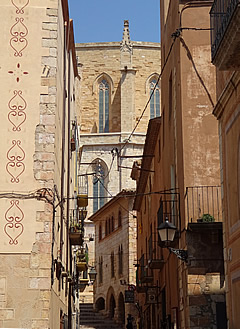
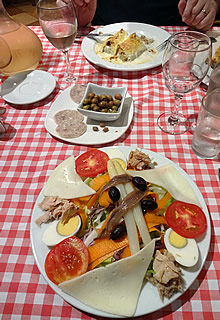
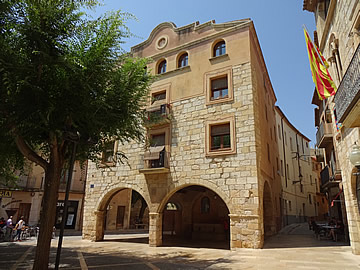
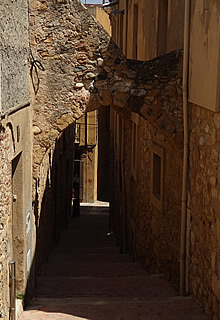
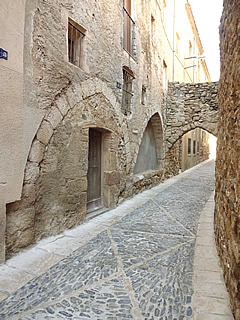
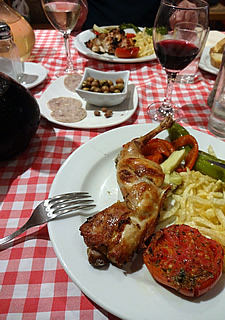
We strolled around the old town before making our way to Fonda where we were very lucky to get a table - it is an extremely popular restaurant, full of local people. We soon found out why - the food was excellent.
There is no written menu - the waitress reeled of a huge list of choices. Our Spanish isn't great but we settled on a salad and roast rabbit for me and outstanding cannelloni (rabbit-filled?) and a succulent grilled chicken for Andrew.
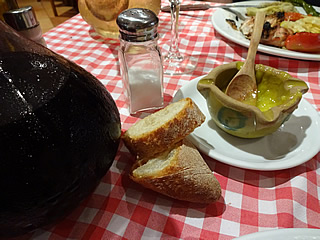
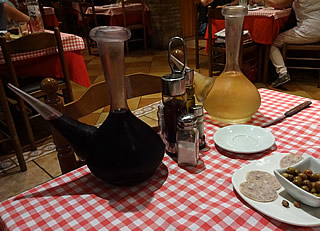
The string fries were served with a superb garlic mayonnaise. The wine was served in a traditional Spanish carafe - it's the only place we've ever been in Spain where people actually shared the wine drinking from the carafe without ever letting the glass touch their lips - very impressive!
Ice cream and crema Catalana finished of a very enjoyable meal.
The afternoon was spent exploring the town, climbing up past the cathedral to the ruins of the castle, then back to Placa Major for cool drinks before returning to La Boella.
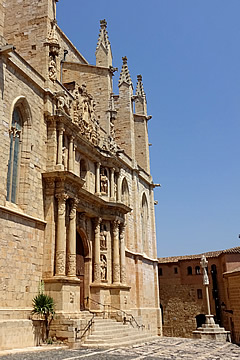
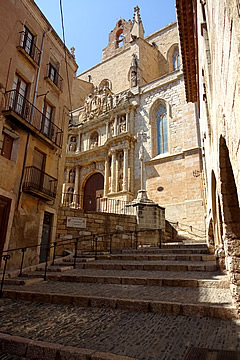
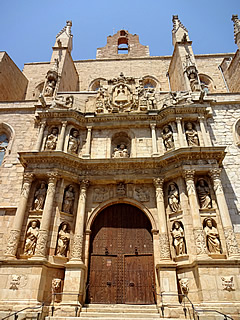
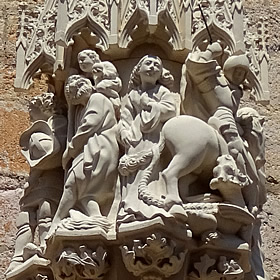
There is very little left of the castle but nearby are some impressive stretches of the town wall.
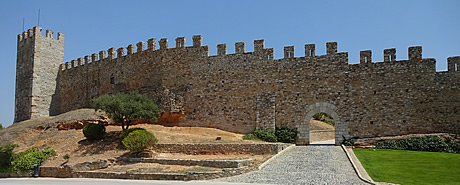
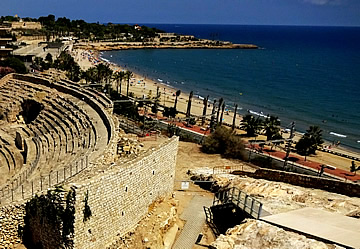
A very hot Sunday exploring Tarragona which has significant Roman remains, not least the second century amphitheatre set very close to the sea, perhaps to catch the cooling breezes.
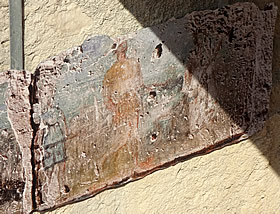
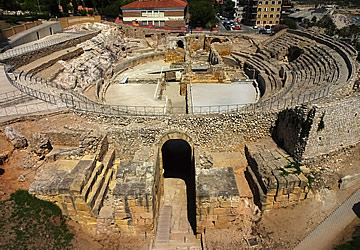
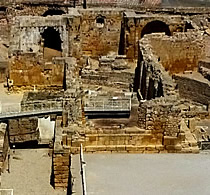
The city was founded by the Romans in 218B.C. who called it Tarraco, but enjoyed its most prosperous period when the Emperor Augustus came to live here some 250 years later.
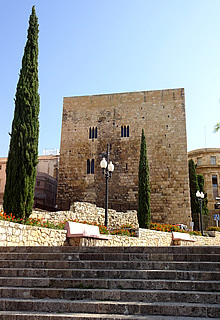
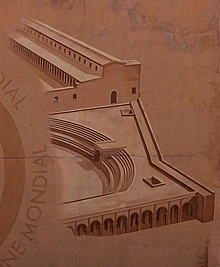
A Visigothic church was built within the amphitheatre in the sixth century and this was replaced with a Christian church in the twelfth.
Nearby on the Placa del Rei is the Praetorium, a huge block of Roman tower on the south east corner of the old town. Go inside and you can climb high to get a good view over the amphitheatre out to sea. Once back at ground level head down the tunnel to the first century Roman circus where chariot races were held.
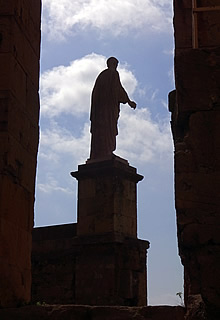
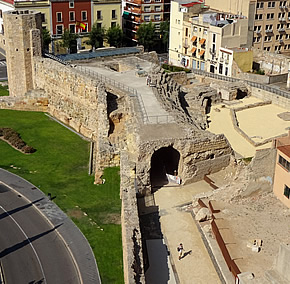
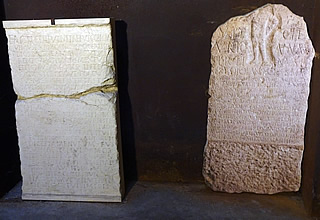
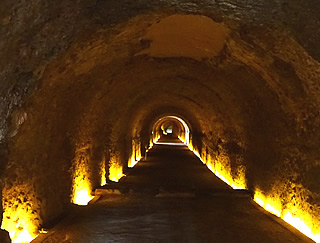
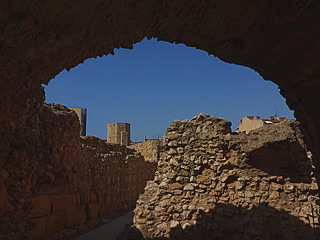
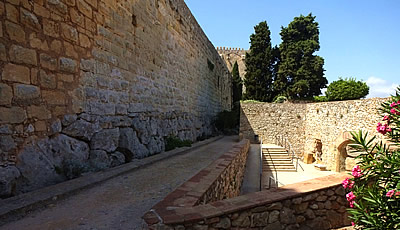
West of the old town was the Local Forum, the centre of life in the Roman city. Here surrounding a large open space were temples, shops, the curia where the Courts of Justice met, and the basilica which was a public building serving numerous purposes. There would perhaps have been a market place with stalls set within the stoas - columned open porticos around the edge.
All that remains is a portion of the large three-naved basilica and, nearby, a number of streets and the back of a temple.
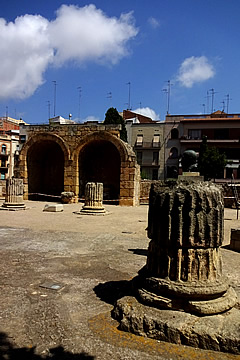
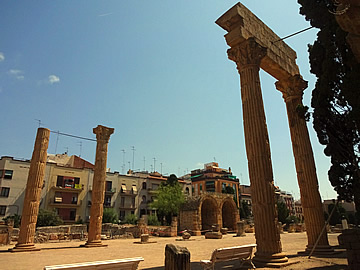
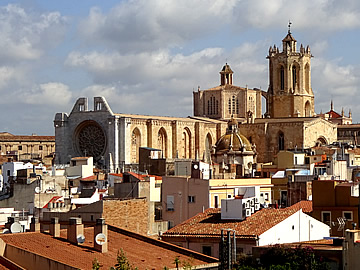
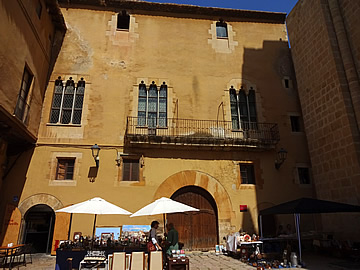
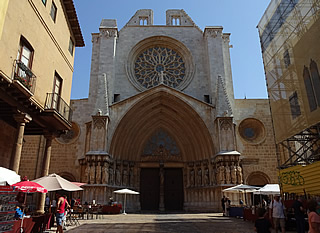
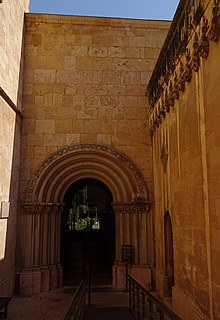
Moving on from the Roman era, the Romanesque/Gothic (the main building is mostly Gothic) cathedral sits squarely in the old town surrounded by narrow streets and small squares. The cloisters are particularly pleasant, reached by a different entrance to the main cathedral they have lovely Romanesque columns with wonderfully carved capitals.
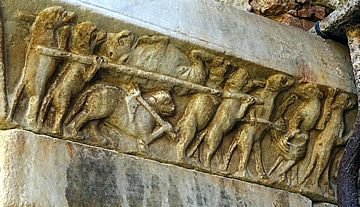
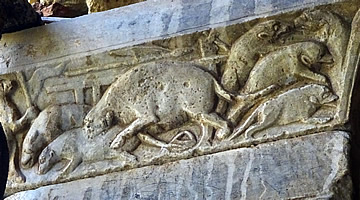
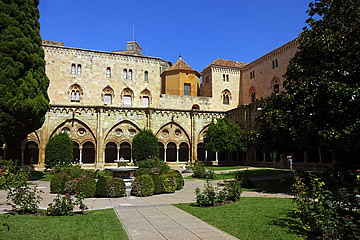
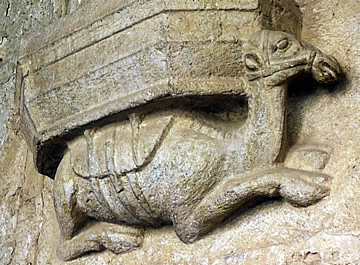
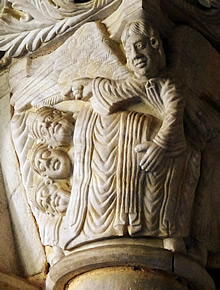
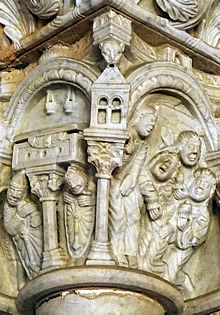
After a long hot morning we made our way to the harbour where there are numerous restaurants, all heaving with people enjoying lunch on a sunny Sunday.
We managed to get a table at El Posit where we had a superb meal: jamon iberico, croquettes and tomato bread followed by fabulous prawns for me and sole for Andrew accompanied by a very nice half a bottle of chilled Pescador, a white frizzante.
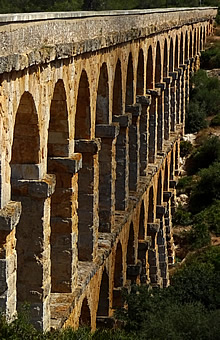
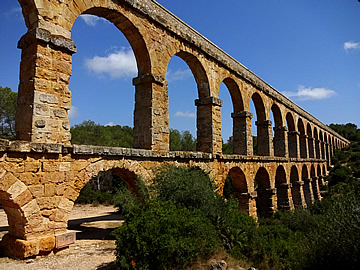
On the way back to the hotel we stopped at Aqueducte de les Ferreres, a very impressive Roman aqueduct. The aqueduct is 217m long and 27m high and you can walk across the top to the other side.
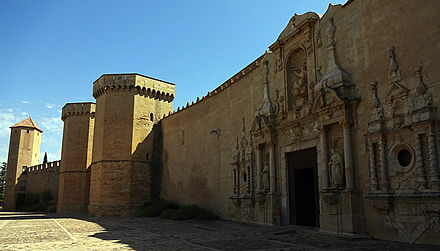
The Cistercian monastery at Poblet - the Reial Monastir de Santa Maria de Poblet - is an easy drive of around 30 km north of Tarragona.
We arrived one morning in time for one of the tours, not exactly guided - we were left pretty much on our own to explore except when we went up onto the roof and into the royal tombs. These are an absolute gem, magnificent alabaster sarcophagi raised high above the floor of the Pantheon de los Reyes.
A very informative leaflet is provided with the visit, describing the history of the community and each of the rooms.
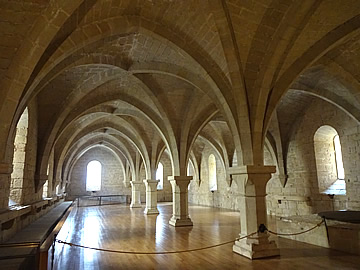
Poblet was founded in 1150 by Count Ramon Berenguer IV when Cistercian monks arrived from the Monastery of Fontfreda in France.It has always been under royal protection (hence the "Reial" in its name) and became the pantheon (in this context meaning a building containing tombs) of the Catalan-Aragonese royalty.
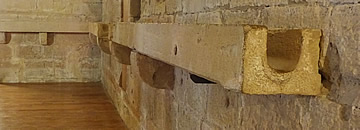
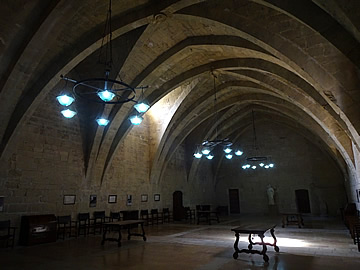
The monastery fell out of favour over time and was abandoned following the 1835 Act of Dissolution. In 1940 four Italian Cistercian monks arrived to restore Poblet.
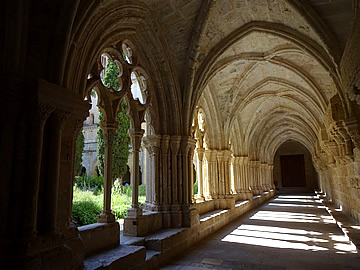
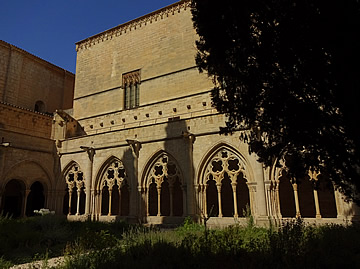
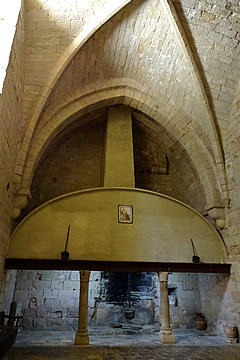
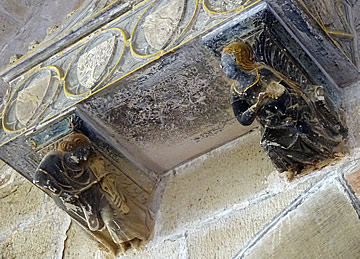
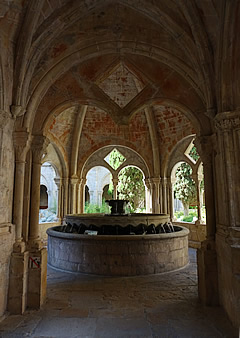
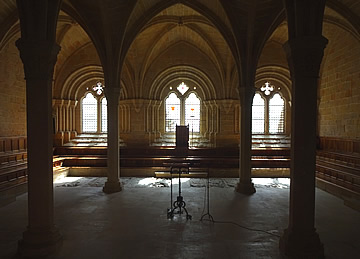
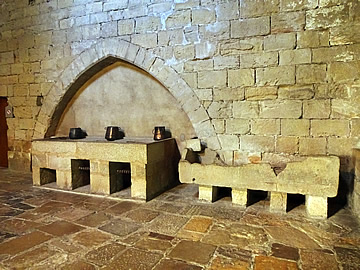
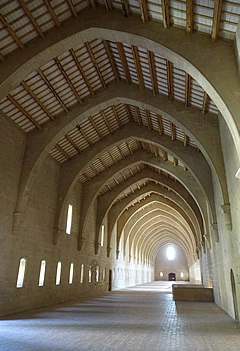
We climbed to the upper floor and the massive space of the monks' dormitory.
From here out onto the roof above the cloister before descending into the pantheon.
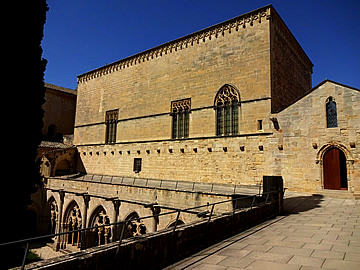
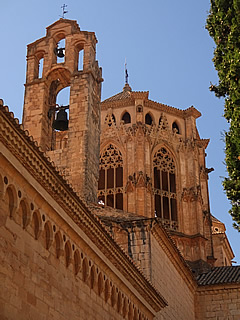
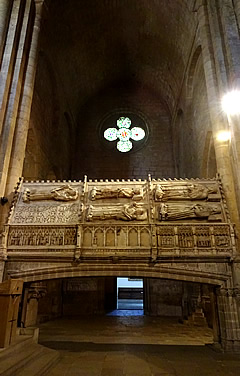
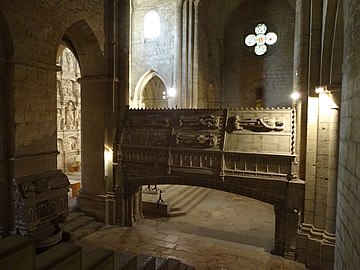
The pantheon is quite magnificent. Eight kings are laid to rest here along with six consort queens and Beatrice of Aragon, twice Queen of Hungary.
Beautifully carved figures lie in gravity-defying poses on sloped sarcophagi lids high above the floor.
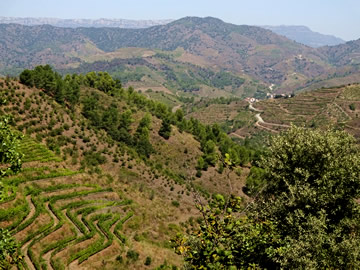
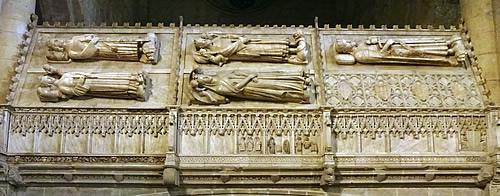
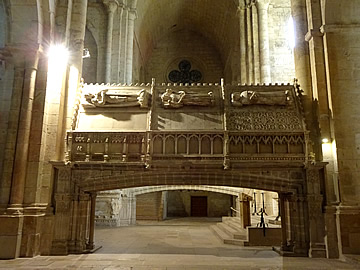
We drove away from the monastery on minor roads across undulating hills heading south-west towards the coast and the restaurant Les Agulles between Falset and Marca. It is housed in an old railway station and has a very good reputation.
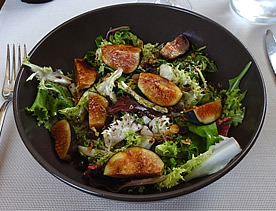
It lived up to it with an excellent lunch. I had a lovely fig salad followed by very good pork elbow! Andrew had cannelloni then entrecote. The steak was undercooked to begin with but they were more than happy to take it back for an extra blast of heat. Excellent Priorat wine - the Priorat wine region is just north of Falset. An unbelievable 10 euros each - including the wine!
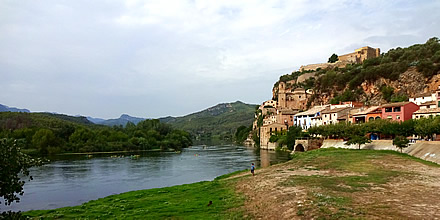
Miravet is a Knights Templar castle, though it started life as a Moorish construction in the 11th century.
It's about 60km west of Tarragona, and we parked outside the village, walking through it to reach the path that climbs to the castle.
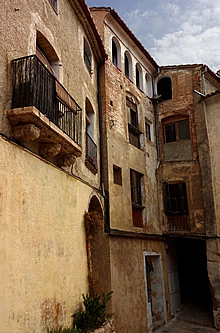
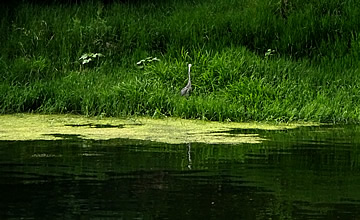
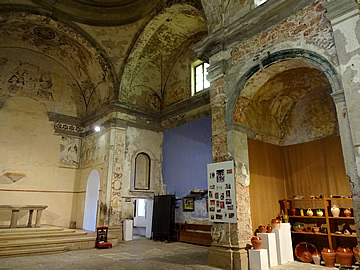
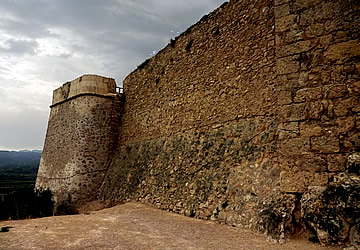
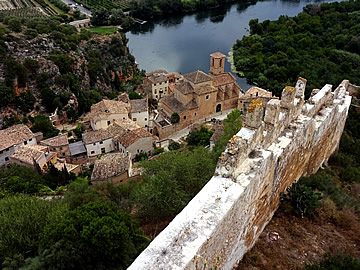
The village itself is old, with the oldest part clustered around the lower slopes of the promontory
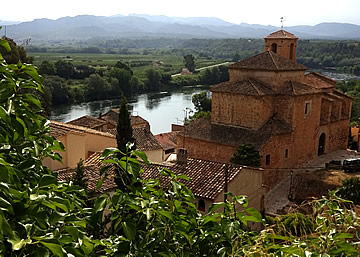
Most of what can be seen of the castle today dates from the period of the Knights Templar. In the middle of the twelfth century the Moors were defeated here and the Knights took control of the castle. They began a great building programme to turn the castle into a Templar fortress. The Templars held the fortress until the beginning of the fourteenth century when they fell out of favour and were besieged until they capitulated in 1308. The Knights Hospitaller then took over the castle.
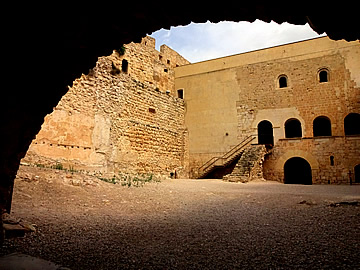
The leaflet provided is informative and the castle is an interesting place to wander around with huge halls, granary, church, etc. though it is the outer walls and location which impress the most.
Afterwards we drove down to the River Ebro delta which is very flat (of course!), highly cultivated and also highly developed with some very ugly sprawling towns such as Deltebre.
We made for Riumar on the coast and a very good lunch at Les Dunes - a really good Tuna Tataki and filleted sea bream. We were offered a complimentary liqueur, d'Arroso, like a milky Bailey's.
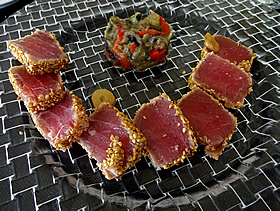
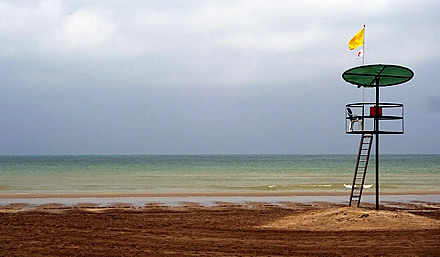
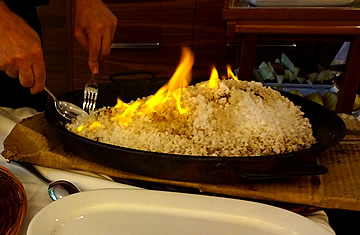
The day we were flying out we detoured to Castelldefels south of Barcelona on the coast to have lunch at Amar, and particularly to have the sea bass baked in salt. Absolutely superb, and definitely worth a special journey! The fish is wonderfully succulent and tastes fabulous.